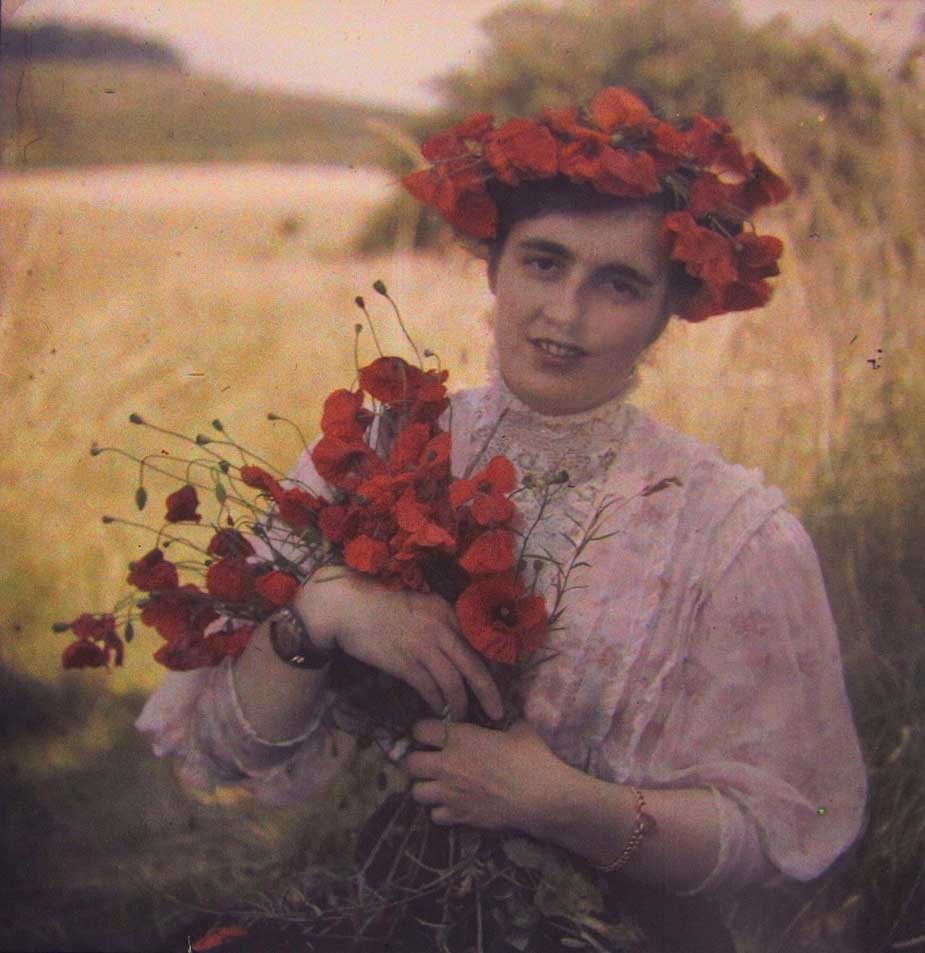From days gone by, an early summer scene for your viewing fancy.

“Woman with Poppies”: vintage Autochrome glass plate: Anonymous, perhaps British photographer: ca. 1910-20: 8.2 x 8.2 cm. Autochrome, the first practical color photographic process, was invented and first patented by Auguste and Louis Lumière of France in 1903. Commercially available beginning in 1907 and championed by pictorialist photographers the world over, Wikipedia states Autochrome was an additive color mosaic screen plate process. “The medium consists of a glass plate coated on one side with a random mosaic of microscopic grains of potato starch dyed red-orange, green, and blue-violet which act as color filters. Lampblack fills the spaces between grains, and a black-and-white panchromatic silver halide emulsion is coated on top of the filter layer.” From: PhotoSeed Archive
See other examples of early color views in various processes from PhotoSeed here.



